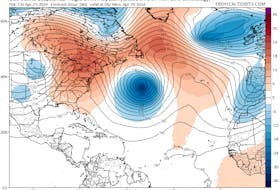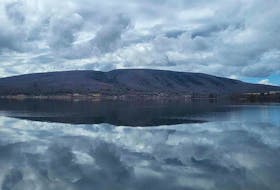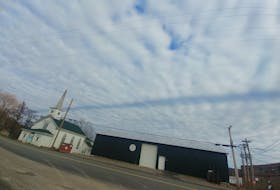If someone accuses you of walking around with your head in the clouds, take it as a compliment. People who do get to see some pretty amazing clouds.

March 27, Sylvie Theriault was doing just that when she spotted what she referred to as “weird clouds.” She described them as looking like a bunch of jumping greyhounds. Great description, Sylvie! These unusual looking clouds do have a name: they are known as undulatus asperatus.
These clouds look scary, but are not threatening. The wave effect comes from turbulence caused by different air masses coming together and pushing clouds into shapes like rough waves on the sea.
The species of this cloud is "undulatus" which means "wave" In Latin. The variety of the cloud is "asperatus" which means "roughened," so the name literally describes how this cloud looks.
These are low, mid-level clouds; usually about 2,000 meters above ground.
Back to the cloud: this surreal looking cloud is a relatively new discovery, the first since 1951! It was popularized and proposed as a type of cloud in 2009 by Gavin Pretor-Pinney of the Cloud Appreciation Society. It was added to the International Cloud Atlas under the name asperitas as a supplementary feature in March of 2017.
Asperitas clouds are formed by warm and cold air meeting, this causes a turbulent effect. It is also believed that asperitas can form when dry air meets moist air.
Imagine this: when you pour balsamic vinegar on a plate, then add a tasty dipping oil next to it, they don’t mix, but lie there, side by side. That’s how the soft, wavy folds are created in the sky.
Last Tuesday, we were on the western edge of an extratropical storm that sat about 800 kilometres south of Halifax. Meanwhile, a pocket of cooler, drier air was pushing down from the northwest: warm and moist on one side, colder and dry on the other.
If you happen to see something intriguing in the sky, snap a photo and send it along. I’ll do my best to clear things up with a little science.
Today's weather fact
Welcome to April: the first full month of spring! Did you know that the Latin word aperio, meaning “to open or bud,” gives us the name April?
- Want more weather information? Visit WeatherByDay.ca
- Have a weather question, photo or drawing to share with Cindy Day? Email [email protected]
Cindy Day is the chief meteorologist for SaltWire Network.









